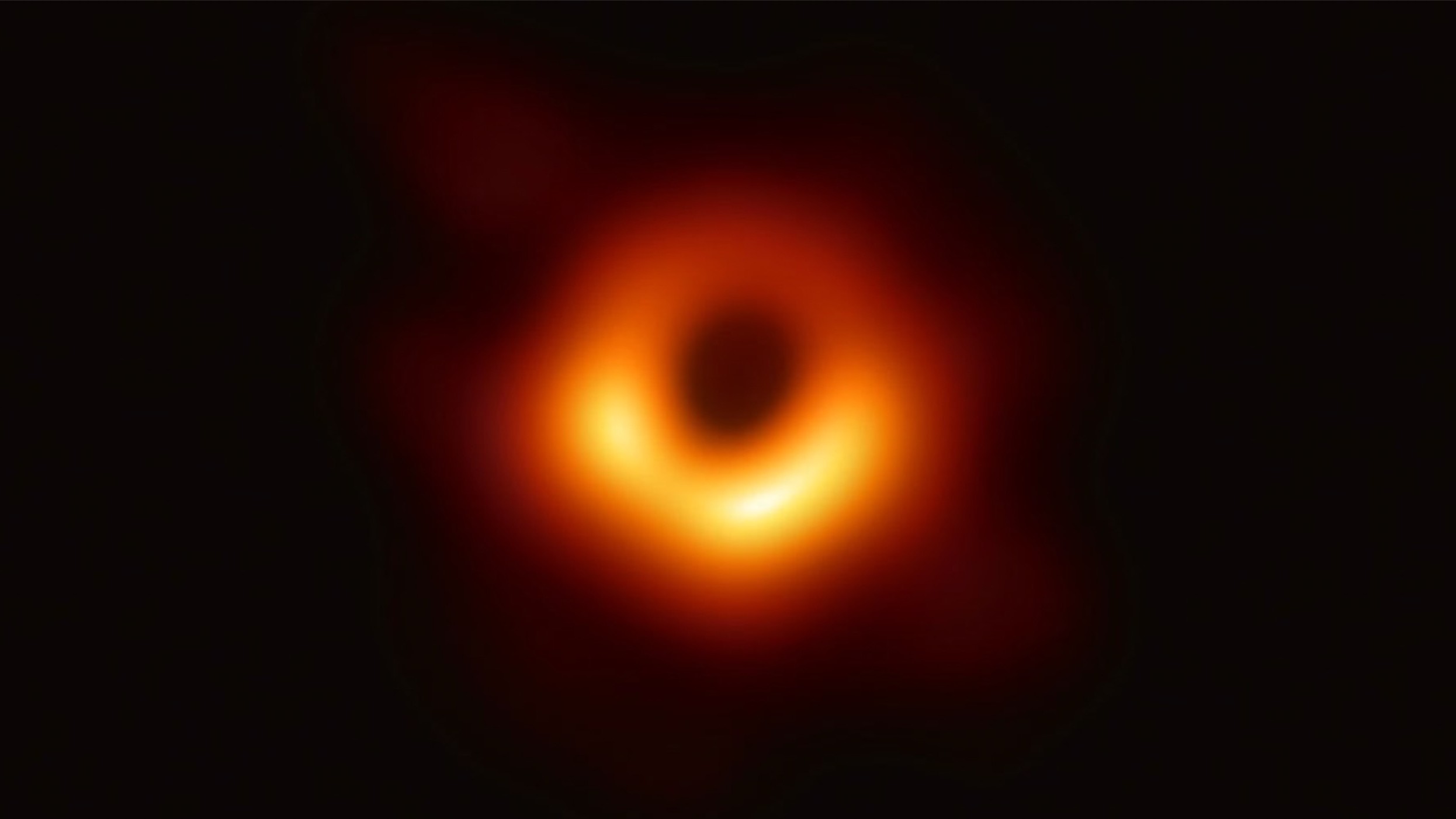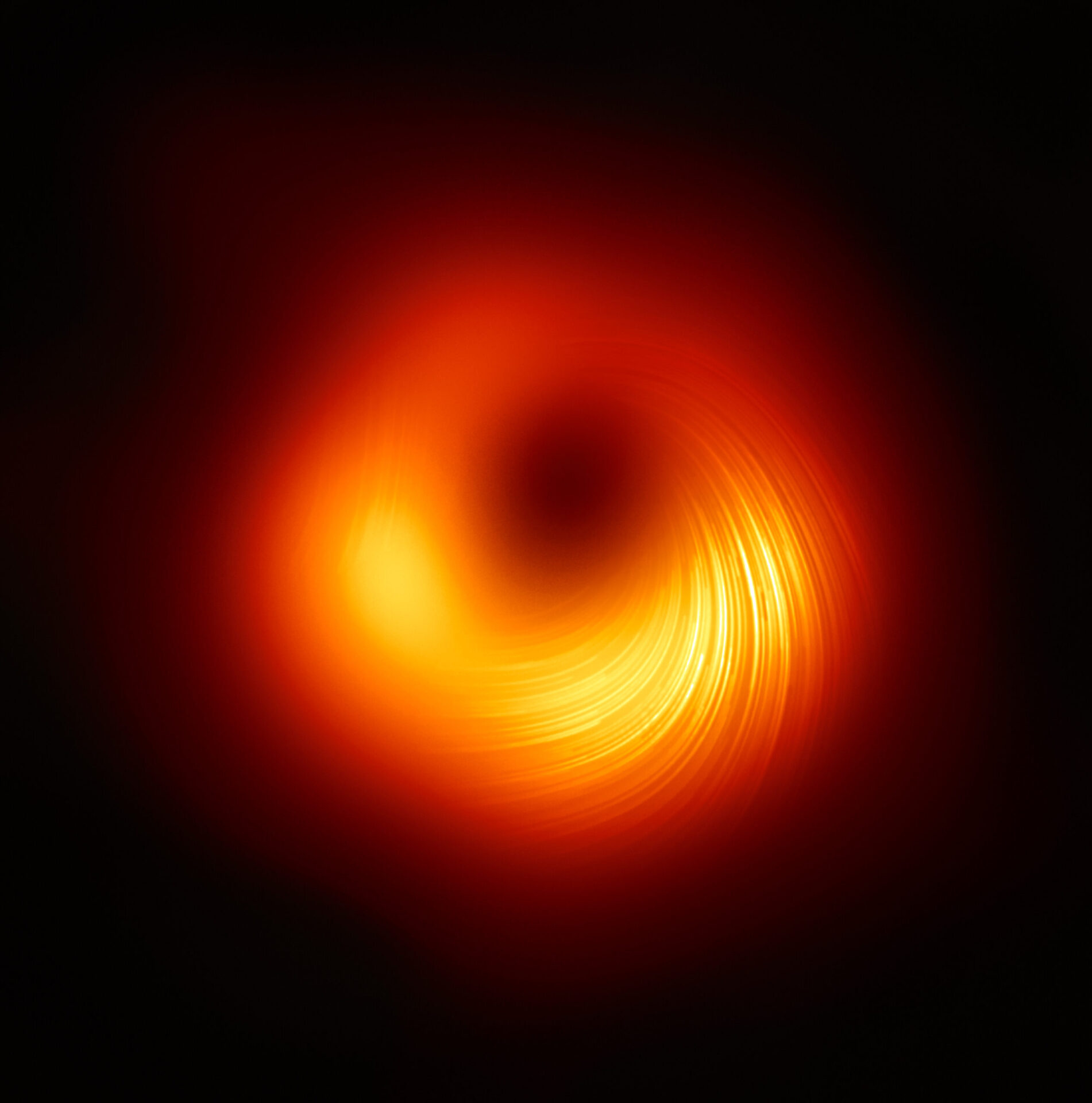
A few years ago, astronomers saw for the first time a patch of cosmic darkness long thought to be unseeable — a black hole, a powerful, elusive beast so dense that not even light can escape its gravity.
Black holes are known to gobble up anything and everything that ventures close to them — gas, stars, planets and even fellow black holes. But this fuzzy, donut-like black hole (later fine-tuned by AI into a skinny ring) in the galaxy M87 is slowly breaking black hole stereotypes. For one, it appears to be giving back to the universe by losing energy.
Two months ago, this particular supermassive black hole roughly 55 million light-years from Earth, known as M87*, was studied using the Event Horizon Telescope (EHT), which combines data from multiple radio telescopes worldwide to make a virtual telescope the size of Earth. Observations showed M87* to be spinning, dragging with it its magnetic field and the nearby fabric of space and time.
Related: 1st black hole imaged by humanity is confirmed to be spinning, study finds
Earlier this month, astronomers analyzing an image of the black hole obtained by the EHT in 2021 found that its magnetic field is strong enough to sometimes prevent it from gobbling up nearby matter.
Now, fresh analysis of the image by a subset of that team has revealed that the magnetic field is responsible for also slowing down the rotating black hole, like a spinning top decelerating over time.
"We were able to conclusively say the 2021 EHT image shows that energy is flowing out close to the black hole," Andrew Chael, who is an astrophysicist at Princeton University in New Jersey and lead author of the new study, told Space.com. "We need future, higher-sensitivity images to determine 100% if the energy is flowing out from the black hole's surface itself."
The energy put out into the depths of space during this self-braking process flows out like "million-light-year-long Jedi lightsabers" via structures called relativistic jets, which stretch up to 10 times longer than our Milky Way galaxy, study co-author Alexandru Lupsasca of Vanderbilt University in Tennessee said in a statement.
"If you took the Earth, turned it all into TNT and blew it up 1,000 times a second for millions and millions of years, that's the amount of energy that we're getting out of M87," said study co-author George Wong of Princeton University.
The fact that black holes can lose energy was one of the predictions of Einstein's theory of relativity. Scientists knew some of the energy loss could be due to the magnetic fields, but they did not know exactly how the process unfolds.

Findings from the new study suggest that the energy pouring out of the black hole leaves along the direction of its magnetic field. The study team is also entertaining a purely theoretical but nonetheless exciting possibility that the energy pushed out from M87* could flow into a different black hole.
It is also likely that the energy outflow powers the jet blasting out of the black hole, which previous research showed varies on a 11-year cycle. Models show the amount of energy exiting the black hole is similar to what the jets need, although astronomers are not completely sure yet.
Future observations of M87* with EHT could get them closer to a definite answer. Also in the works is a next-generation EHT, which is expected to add more antennas to the virtual network of telescopes to obtain sharper images and perhaps even videos of black holes.
"I think it's extremely likely the black hole powers the jet, but we can't prove it," said Lupsasca. "Yet."
This research was described in a paper published last week in The Astrophysical Journal.







